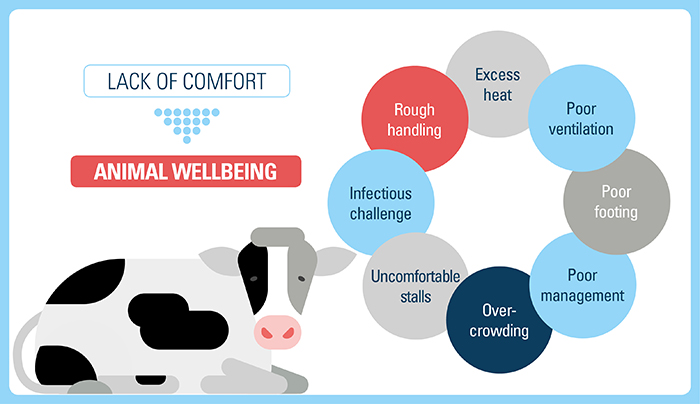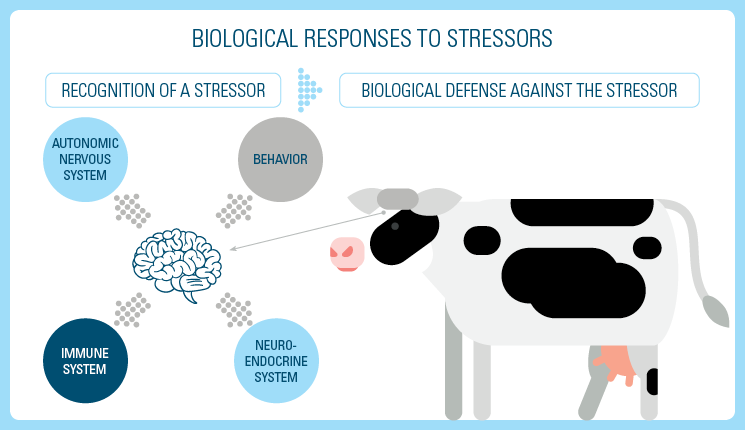

Influential Factors
The effect of some stress factors on dairy cattle welfare has lastly received important research attention in the published literature. Understanding these factors is essential to reduce the negative impact they have on wellbeing.
Animal welfare refers to an animal’s physical and mental state and how it is coping with its situation.
In recent years consumers have become increasingly concerned about the way animals are raised for public health, food safety and welfare reasons.
As detailed in a U.S. report1, 58% of consumers in the country say they are more concerned about animal welfare, specifically as it relates to the food supply, than they were just a few years ago.
According to various scientific studies, an animal is in a good state of welfare if it is:
- Healthy
- Comfortable
- Well-nourished
- Safe
- Able to express its innate behaviours
- Does not suffer from unpleasant states such as pain, fear, and distress
Cattle disease prevention and early veterinary treatment, provision of appropriate shelter, management, nutrition, and humane handling and slaughtering2 are all factors in cow welfare.
It has been shown that healthy, happy dairy cows produce more milk, which directly impacts farmers’ interest in cows’ welfare.
Dairy Cattle Welfare

Several factors can affect a dairy cow’s wellbeing and overall productivity and reproductive performance.
Four biological defense responses to stressors:
- Behavioral
- Neuroendocrine
- Immune
- Autonomic nervous system

Stress-induced changes in the secretion of pituitary hormones have been implicated in failed reproduction.
Identifying and understanding these processes is key to correctly predicting the consequences of stressors to dairy cows’ health and performance.
Pain compromises cattle wellbeing3. It is important to recognize pain behaviors to ensure animal welfare in dairy production.
Recognizing pain is difficult in stressed animals, which should further motivate a gentle handling of the animals to reduce stress to a minimum and to facilitate evaluation.
The Cow Pain Scale includes:
- Attention towards the surroundings
- Head position
- Ear position
- Facial expressions
- Response to approach
- Back position
While computer technology can assist with cattle surveillance, looking directly at all animals is the best first step.
- Animal Welfare: Issues and Opportunities in the Meat, Poultry, and Egg Markets in the U.S. 2017. Pub ID: LA15221043.
- Terrestrial Animal Health Code. OIE 2008.
- Gleerup KB, Andersen PH, Munksgaard L, Forkman B. 2015. Pain evaluation in dairy cattle. Applied Animal Behaviour Science 171:25-32.

